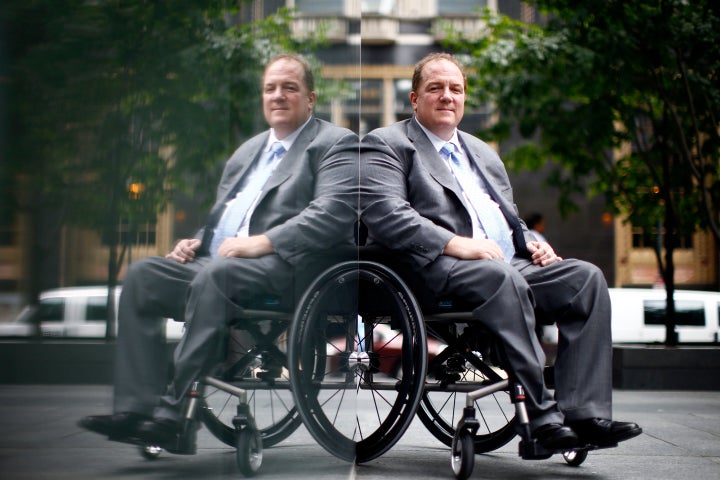
Fred Maahs, poses for a photograph in Philadelphia on Monday, July 13, 2015. The Comcast executive has become a prominent disability-rights activist since being paralyzed from the chest down in a diving accident 35 years ago. Sunday, July 26, 2015 marks the 25th anniversary of the Americans With Disabilities Act (ADA). (AP Photo/Matt Rourke)
By: Laura Geggel
Published: 07/31/2015 10:33 AM EDT on LiveScience
About one in every five Americans reports having a disability, according to results from a new nationwide survey.
About one in eight adults say they have mobility limitations, such as difficulty walking or climbing stairs, making this the most common type of disability, according to the report. The next most common disability is in thinking and/or memory, followed by problems with independent living (such as difficulty running errands and visiting the doctor without help), vision and self-care (such as self-bathing or dressing), according to the report.
The South had the highest percentages of people with disabilities, according to the report. In Alabama, 31.5 percent of people have a disability, followed by Mississippi (31.4 percent) and Tennessee (31.4 percent). Minnesotans reported the least amount of disability (16.4 percent). [Don't Sit Tight: 6 Ways to Make a Deadly Activity Healthier]
Although the report did not analyze the reasons for the disparity between states, the South tends to have higher rates of chronic diseases associated with disability, including heart disease and diabetes, than the rest of the country, the CDC said.
"We are all at risk of having a disability at some point in our lifetime," CDC Director Dr. Tom Frieden said in a statement. "Health professionals and health care systems need to meet the needs of this growing population."
The report also showed that non-Hispanic black adults (29 percent) and Hispanic adults (25.9 percent) reported having more disabilities than non-Hispanic adults (20.6 percent). Moreover, people with lower levels of education, lower incomes and people who were unemployed also tended to report more disabilities.
Women (24.4 percent) also reported having more disabilities than men (19.8 percent).
The report, published online today (July 30), helps mark the 25th anniversary of the passage of the Americans with Disabilities Act, signed by President George H.W. Bush on July 26, 1990. The new report is a result of the 2010 Affordable Care Act, which required the government to collect information on the rates of disability in the country.
The survey was carried out in 2013 and included about 465,000 adults. However, the survey did not include calls to institutional centers or group homes, which are places where many people with disabilities live, and so it may underestimate the percentage of Americans with disabilities.
The new report will help the CDC and other organizations develop programs, such as those that address health care access and emergency preparedness, which can help improve the lives of people with disabilities, the CDC reported.
Follow Laura Geggel on Twitter @LauraGeggel. Follow Live Science @livescience, Facebook & Google+. Original article on Live Science.
Copyright 2015 LiveScience, a Purch company. All rights reserved. This material may not be published, broadcast, rewritten or redistributed.
Also on HuffPost:
